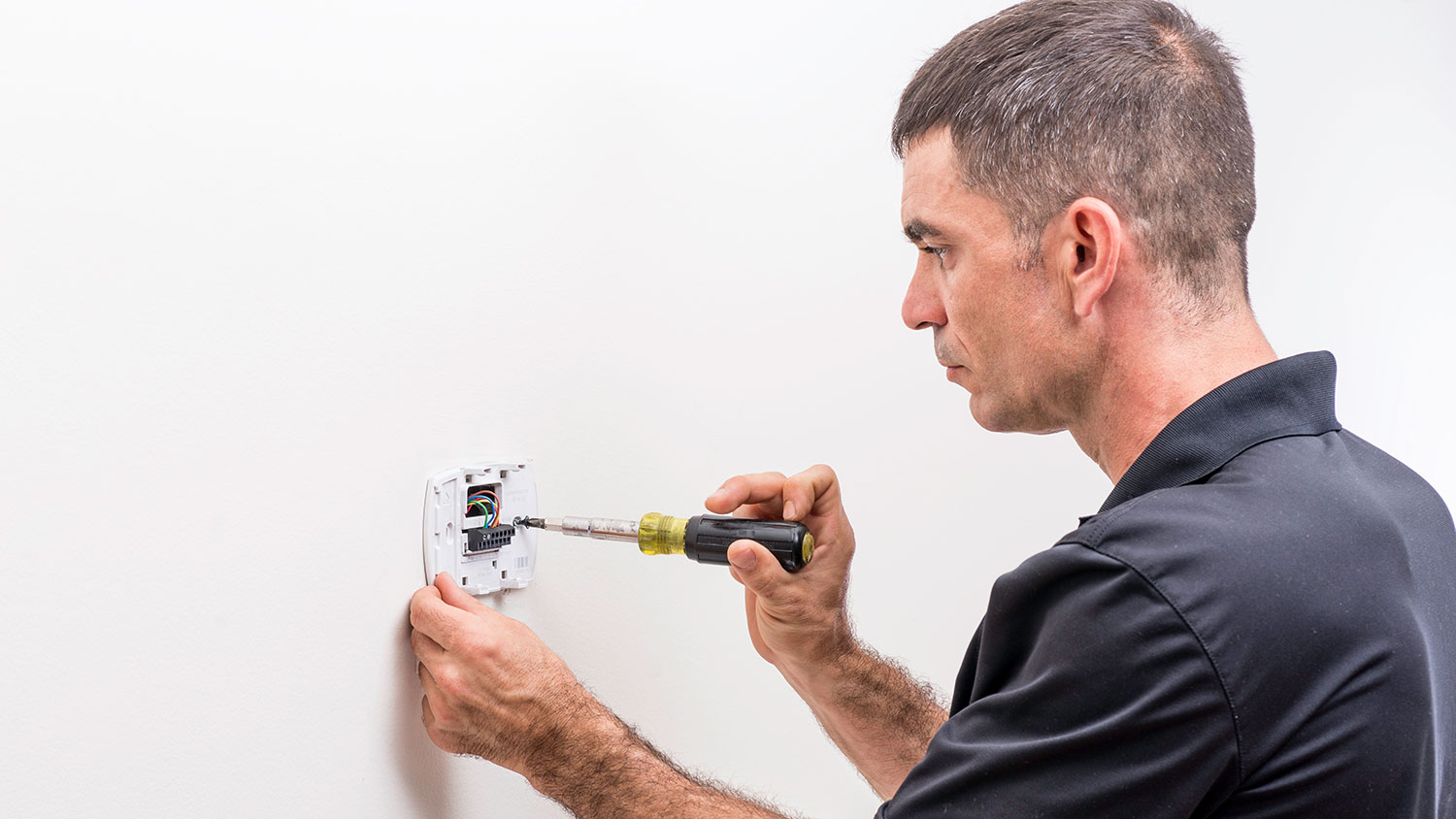
Who to call to replace a thermostat? Learn whether to hire a thermostat installer, HVAC pro, or electrician and see how pros handle the job



Smart thermostats may be worth it for many homeowners. They come with various features, including voice control and smartphone apps. Vacation mode can help lower energy usage when you’re out of town for an extended period. Alert warnings let you know about major spikes or drops in temperature. Smartphone apps can track energy usage, and smart thermostats can learn your routine over time to adjust your temperature and reduce wasted energy consumption automatically.
You typically do not need more than one smart thermostat. While it’s common to see multiple mechanical thermostats throughout a large home, multiple smart thermostats may try to override each other. This can lead to problems with the HVAC system. Ensure the unit you buy has the option for dual- or multi-zoned systems to avoid compatibility issues.
Installing a programmable or smart thermostat may save you $180 per year in utility costs. A big part of this comes from a smart thermostat’s ability to learn and adapt to your regular routines. With smartphone apps or web-based interfaces, you also have the option to control your thermostat when you’re not home.
From average costs to expert advice, get all the answers you need to get your job done.

Who to call to replace a thermostat? Learn whether to hire a thermostat installer, HVAC pro, or electrician and see how pros handle the job

Discover common smart thermostat installation costs such as materials, voltage, and labor fees to install a Nest thermostat and other popular brands.

HomeAdvisor’s Thermostat Replacement Cost Guide covers installation costs for mechanical, smart, and programmable thermostats.